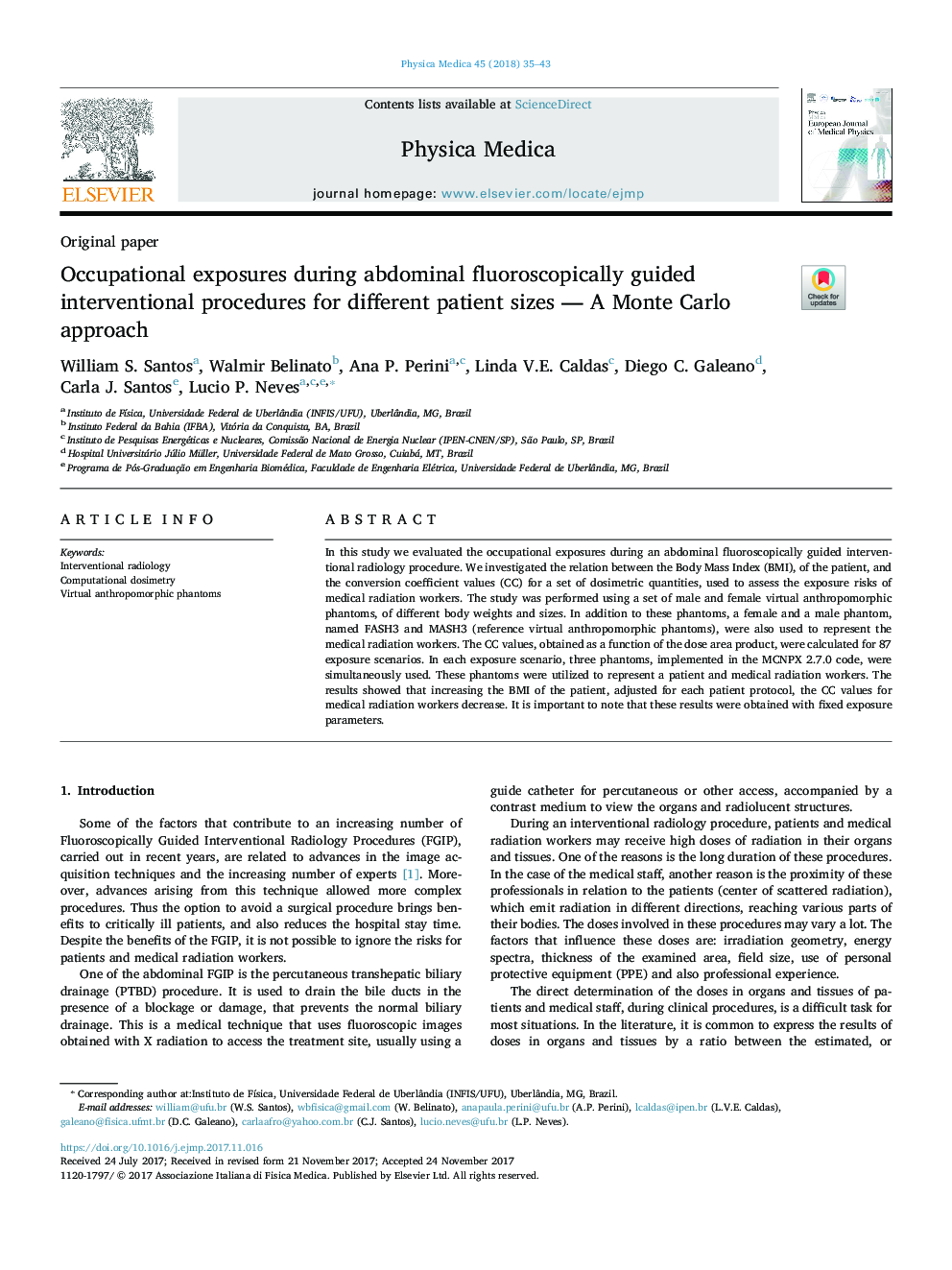| Article ID | Journal | Published Year | Pages | File Type |
|---|---|---|---|---|
| 8248963 | Physica Medica | 2018 | 9 Pages |
Abstract
In this study we evaluated the occupational exposures during an abdominal fluoroscopically guided interventional radiology procedure. We investigated the relation between the Body Mass Index (BMI), of the patient, and the conversion coefficient values (CC) for a set of dosimetric quantities, used to assess the exposure risks of medical radiation workers. The study was performed using a set of male and female virtual anthropomorphic phantoms, of different body weights and sizes. In addition to these phantoms, a female and a male phantom, named FASH3 and MASH3 (reference virtual anthropomorphic phantoms), were also used to represent the medical radiation workers. The CC values, obtained as a function of the dose area product, were calculated for 87 exposure scenarios. In each exposure scenario, three phantoms, implemented in the MCNPX 2.7.0 code, were simultaneously used. These phantoms were utilized to represent a patient and medical radiation workers. The results showed that increasing the BMI of the patient, adjusted for each patient protocol, the CC values for medical radiation workers decrease. It is important to note that these results were obtained with fixed exposure parameters.
Related Topics
Physical Sciences and Engineering
Physics and Astronomy
Radiation
Authors
William S. Santos, Walmir Belinato, Ana P. Perini, Linda V.E. Caldas, Diego C. Galeano, Carla J. Santos, Lucio P. Neves,
